BP and Equinor End NY Offshore Wind JV Splitting Empire and Beacon Wind
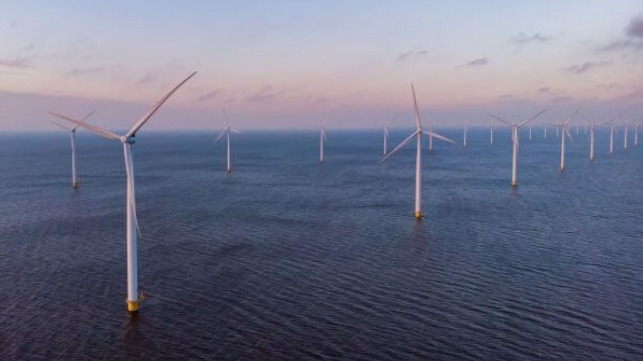
Two of the large offshore wind developers, BP and Equinor, announced an agreement to end their joint venture projects in New York and independently pursue future offshore wind opportunities as they positioned for today’s close of New York State’s fourth offshore wind solicitation. The companies will swap interests in both Beacon Wind and Empire Wind and associated shore facilities in Brooklyn and Queens, New York.
The two companies had a 50-50 joint venture to develop Empire Wind which would be located south of Long Island and Beacon Wind which would be located between Cape Code, Massachusetts and Long Island, New York. Equinor won the lease for Empire Wind in 2017 and Beacon Wind in 2019. The following year, BP joined the projects with an investment of $1.1 billion.
Both projects are advanced in their permitting process with the two phases of Empire Wind having already received federal Record of Decision from the Bureau of Ocean Energy Management. The federal environmental review for Beacon Wind commenced in June 2023. Offtake contracts were also set for Empire Wind 1 in 2019 and 2021 and contracts for Empire Wind 2 and Beacon Wind 1 were included in New York’s second solicitation. New York regulators in October 2023 however rejected a proposal for the wind farms to revise their power agreements to reflect increased costs.
Under the agreement announced today between the two companies, BP will take full ownership of Beacon Wind and Equinor will take full ownership of Empire Wind. BP will also take ownership of the Astoria Gateway onshore to support the project while Equinor will take ownership of the facility at the South Brooklyn Marine Terminal.
The companies also said that they agreed with the New York State Energy Research and Development Authority (NYSERDA) to terminate the power agreement for Beacon Wind. Canceling the prior contracts was a condition for the developers to resubmit in the new solicitation which closes today. BP did not indicate if it would be submitting a proposal but did report it will be taking a pre-tax impairment charge of around $0.6 billion related to its U.S. offshore wind assets.
The Beacon Wind lease was originally awarded in 2019. The plan calls for two phases with Beacon Wind 1 having a potential capacity of 1,230 MW and the second phase 1,360 MW. The lease comprises a combined area of 128,000 acres located between approximately 15 and 30 miles southeast of Long Island.
Equinor, however, confirmed it was submitting a revised bid today for Empire Wind 1 in the solicitation, but that Empire Wind 2 will be matured for a future solicitation round. Empire Wind 1 has the potential for 810 MW while phase 2 would have a potential capacity of 1,200 MW.
This swap deal follows a similar announcement by Ørsted yesterday that it would acquire Eversource’s stake in the Sunrise Wind project also located in New York State. The project is also seeking to rebid its power agreement and while saying it believes the potential for the project, Ørsted made the deal contingent on winning a position in the current New York State round.
Experts were predicting that New York would receive strong interest and a broad range of proposals in the new round. In addition to Ørsted, Equinor, and BP, several earlier-stage projects that do not have prior power agreements are expected to submit proposals. New York said it would make a fast decision anticipating selecting the projects by the end of February and targeting June to complete contracts.
Federal Grant Advances Plans for California’s First Wind Port in Humboldt
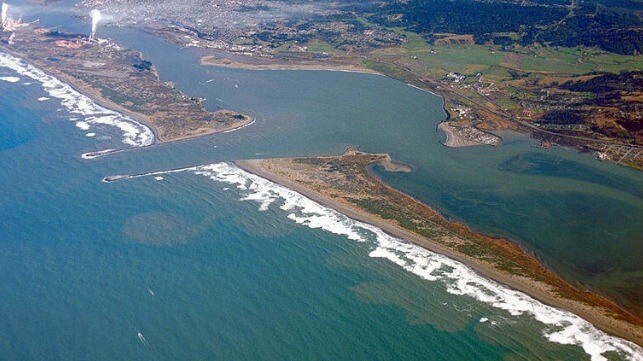
Plans to develop California’s first wind port are being advanced with news of a large federal grant. Still in the planning stage, the concept calls for an assembly and staging facility to be located in the Northern California city of Humboldt which could support the first two lease areas awarded in 2022 by the Bureau of Ocean Energy Management and help California reach its first goal of 25 MW offshore wind energy.
The Department of Transportation is awarding $426.7 million for the construction and maintenance of offshore wind infrastructure to the Humboldt Bay Harbor, Recreation, and Conservation District. The award is being made under provisions in the Infrastructure Act of 2023.
“Offshore wind is a key tool for combatting climate change while providing the power we need to improve lives and grow the economy. And we are paving the way here in Humboldt with this first-of-its-kind offshore wind project on the West Coast,” said Representative Jared Huffman of California during a presentation ceremony on January 23.
Humboldt Bay is the second-largest natural bay in California with commercial operations including wood imports and a historic industrial base in addition to the recreation activities in the area. Plans for the wind port were first announced in 2022 and Crowley won the rights to develop the project working with state and local officials. Crowley’s Wind Services group was negotiating a deal with the port to lease, develop, and operate the future Humboldt Bay Offshore Wind Heavy Lift Marine Terminal. The site design will support tenants in the manufacturing, installation, and operation of offshore wind floating platforms, the use of heavy cargo vessels, and staging for ultra-heavy turbine components. The agreement focuses on a 98-acre Phase I development, with options to expand later as needed. Phase 2 could double the size of the facility.
“It is a remarkable honor for the Harbor District to receive Federal funding for construction of the proposed Heavy Lift Marine Terminal Project. The project is designed to serve as a multi-purpose port facility to support offshore wind throughout the West Coast of the US,” said Rob Holmlund, Director of Development for the Humboldt Bay Harbor, Recreation and Conservation District.
The project previously received $8.6 million through the Department of Transportation and MARAD’s Port Infrastructure Program. It will require matching investments private investments but the first federal grants are an important step in the process.
Port officials highlight that its location means it could support both the planned wind farms off Humboldt Bay but also Morro Bay. The two Northern California sites were the first auction by BOEM in December 2022. California’s offshore topography means that they will need to be floating offshore wind farms requiring massive structures which the wind port is designed to accommodate. Port officials said it could accommodate 25 MW turbines, the largest currently anticipated by the industry.
Permitting and reviews are proceeding for the planned wind port and is expected to be completed by 2025. Port officials said that even on that timeline, construction could be completed by 2029 in time to support the development of California’s first offshore wind farms.
New Jersey Selects Two Offshore Wind Farms to Reinvigorate Energy Plans
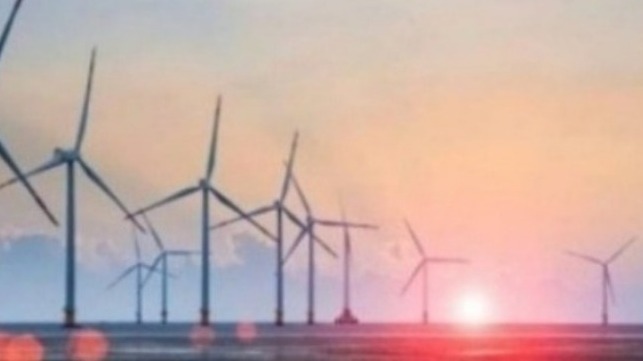
New Jersey state regulators today announced the results of the state’s third offshore wind solicitation calling the awards the largest in the state’s efforts to launch offshore wind into its plans for clean energy. The state is looking to accelerate its approval process to restart the industry after Ørsted set back the efforts by pulling out of the approved Ocean Wind 1 and 2 projects citing the changed economics of the developments.
“Today’s Third Solicitation awards are undeniable proof that the future of offshore wind in New Jersey is as strong as ever,” said New Jersey Governor Phil Murphy. He had previously laid out a plan calling for aggressive development of the industry to reach 11 GW of offshore wind power generation by 2040.
The governor directed state officials to accelerate their efforts after Ørsted announced at the end of October 2023 that it had ceased development of the two-stage project which was to consist of sites generating 1,100 MW and 1,148 MW. The company said the projects had experienced significant impacts from macroeconomic factors, including high inflation, rising interest rates, and supply chain constraints, particularly a vessel delay on Ocean Wind 1 that considerably impacted project timing. Ørsted is retaining the federal seabed leases.
The New Jersey Board of Public Utilities awarded a total of 3,742 MW today in the form of two projects largely recouping its position but extending the timeline to realize power from the offshore wind assets. Today’s selections are not expected to come online until 2031 and 2032, a significant delay from Ocean Wind 1 which received its final federal approvals last October and was projecting starting to generate power in 2025 and completing commissioning in 2026. Ocean Wind 2 was still in the permitting process when it was canceled. Construction had been projected to start in 2028.
The first of the two selected projects is called Leading Light. It would be located off southern New Jersey and being developed by a partnership between Invenergy and energyRe. It will be approximately 40 miles east of Long Beach Island and will consist of up to 100 turbines generating approximately 2.4 GW. Offshore construction is projected to begin in 2028 with the project fully commissioned in 2031.
The second selected project is the second phase of Attentive Energy, with a 1.3 GW project planned by TotalEnergies and Corio Generation. It will be over 40 miles offshore from Seaside Heights in central New Jersey. It would be commissioned by 2032 powering approximately 600,000 homes. Attentive Energy One located between New Jersey and New York will be sending an additional 400 MW of power to New York.
New Jersey had previously approved one other project, Atlantic Shores. A partnership between Shell New Energies US and EDF Renewables North America, it has a lease area located approximately 10 to 20 miles off the coast of New Jersey between Atlantic City and Barnegat Light. In June of 2021, the New Jersey Board of Public Utilities awarded Atlantic Shores Offshore Wind a contract to develop 1,510 MW in offshore wind energy, enough to power up to over 700,000 homes. After Ørsted withdrew its projects, the CEO of Atlantic Shores issued a statement reiterating its commitment to the project.
Officials are highlighting that the two projects selected today have both committed to supporting the establishment of a tower manufacturer to be located at the NJ Wind Port, a redevelopment site in Salem Country, New Jersey. The two projects plan O&M facilities in New Jersey and are committed to marshaling both projects at the NJ Wind Port. They will also invest to expand the monopile capacity and engineering to increase the tonnage limit per monopile.
Governor Murphy has also instructed the regulators to accelerate the state’s next offshore wind solicitation. They anticipate awards in early 2025 from the fourth round solicitation.
Ørsted Makes Conditional Deal to Take Full Ownership of Sunrise Wind
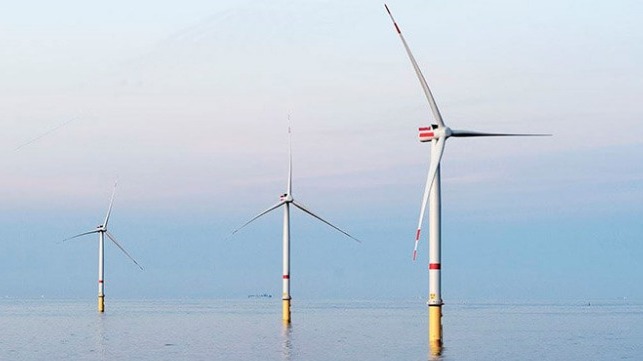
After raising questions about the financial health of the U.S. offshore wind energy industry, Ørsted appears to be changing course and again taking steps to move forward with projects in its portfolio as other companies however continue to exit the sector. Ørsted announced today it has signed an agreement with Eversource to acquire full ownership of Sunrise Wind, a 924 MW offshore wind farm that would deliver power to New York.
Eversource reported earlier in January that it was moving forward with plans to exit its investments including its 50 percent interest in Sunrise Wind, which it had planned to jointly develop with Ørsted. The companies have two joint ventures, one for the development of South Fork Wind, a project that is under construction recently reaching the halfway mark, and another JV that holds both Revolution Wind and Sunrise Wind. Eversource said it was negotiating deals for its interest and expected to record an after-tax other-than-temporary impairment charge in the range of $1.4 to $1.6 billion in the fourth quarter of 2023 on these projects.
The news of the agreement for the sale of Sunrise Wind comes one day before New York State is set to close its fourth round of wind solicitations which includes a provision for existing projects to renegotiate their power purchase agreements. Ørsted is making the acquisition of the 50 percent stake in Sunrise Wind conditional on the successful award of Sunrise Wind in the ongoing New York solicitation and reaching an agreement with New York’s energy agency, NYSERDA, as well as receipt of the construction and operations plan, and relevant regulatory approvals. New York is expected to report the results of the solicitation by the end of February while final federal permits for Sunrise Wind are expected this summer.
“Following a thorough risk review of our US portfolio, we’re comfortable with taking full ownership of Sunrise Wind if the project is awarded in New York 4,” said David Hardy, Executive Vice President and CEO of Region Americas at Ørsted. “This transaction is a value-accretive opportunity for Ørsted and the best path forward for the project.”
They highlighted that the proposal is the most mature offshore wind project in New York’s pipeline, and assuming it can receive a new power agreement and final approvals, Sunrise Wind is expected to be completed in 2026.
Sounding a more positive note on the offshore wind sector, Ørsted says, “Sunrise Wind will be our third offshore wind farm off the northeast coast, following South Fork and Revolution Wind, which are already under construction. The northeast is an increasing priority for Ørsted, including these projects, port assets, a trained workforce, and supply chain partners. We’re building a future offshore wind hub that is strategic for Sunrise Wind, if awarded, as well as for upcoming solicitations in the region, helping us to differentiate and de-risk potential future bids and projects.”
If Sunrise Wind is not successful in the solicitation, the companies said the existing power contract for Sunrise Wind will be canceled per the state’s requirements, and Ørsted’s and Eversource’s 50/50 joint venture for Sunrise Wind will remain in place. In that scenario, the joint venture will evaluate its next steps.
The plan for Sunrise Wind calls for the wind farm to be located at least 30 miles east of Montauk Point, on the eastern tip of Long Island, New York. It is adjacent to other lease areas controlled by the two companies.
Three-State New England Wind Solicitation Delayed for Tax Guidance
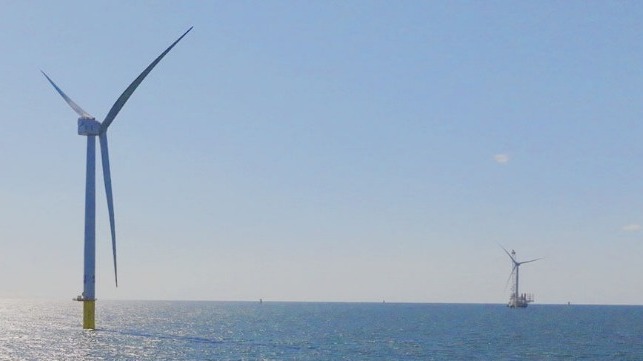
Citing the need for additional guidance from the federal government on the tax code as it pertains to energy credits, Massachusetts along with Connecticut and Rhode Island informed regulators at the end of last week that they intend to delay their current offshore wind solicitation program. The three states had agreed to a coordinated solicitation which is currently underway and was scheduled to close at the end of the month, but will now be extended by at least two months.
“In light of the current uncertainty around federal tax guidance,” the states wrote to the regulators saying they are “concerned that the existing solicitation schedule may produce bids that do not maximize the potential clean energy tax benefits of offshore wind.” They write that they believe it is critical to revise the schedule to encourage the most cost-effective bids.
Tax credits had previously emerged as one of the issues cited by the large developers as one of the hurdles to proceeding with large U.S. offshore wind farms. In addition to the impact of inflation and supply chain problems including a shortage and delays for install vessels, Ørsted for example cited the problems in realizing proposed tax credits as one of the challenges that had caused it to review and abandon U.S. projects. The company reported it expected as much as $5.5 billion in impairment charges as its abandoned U.S. projects including a large wind farm planned for the coast of New Jersey.
The U.S. Treasury Department has been slow to issue the guidance the industry is looking for and which the state power authorities believe will impact the future proposals they receive from developers. The Inflation Reduction Act passed in 2022 includes key provisions for an Investment Tax Credit, which would be a key tax credit available to offshore wind projects. Treasury needs to issue its guidance which is expected to include additional types of energy projects covered under the Inflation Reduction Act.
“The provisions could potentially reduce costs and resulting bid prices within offshore wind proposals,” writes the Massachusetts Department of Energy Resources to the state’s Department of Public Utilities explaining the decision to delay the submission date for the current solicitation.
The U.S. Treasury Department was accepting comments on its proposed guidance through today, January 22. They have scheduled a public hearing for February 20 and are expected to finalize the guidance shortly after the hearing.
Massachusetts agreed with its two neighboring states to coordinate the three states’ solicitation in an effort to provide better opportunities and clarity for developers. They also sought to expedite the process setting the timeline for proposals by January 31, selection by June 12, and executing long-term contracts by August 14.
Each of the states has faced challenges due to the changing economics of offshore wind projects and their development. Massachusetts was the first to become involved in a dispute with developers seeking to reset previous power purchase agreements while the other states also have faced similar challenges from the industry. Part of the urgency was to provide an opportunity for federally selected projects to rebid their power agreements with state regulators.
The letter announced that they would be delaying the submission date as well as the selection and contract target dates each by approximately two months. They are now calling for submissions by March 27, hoping that the delay will provide enough time for the federal guidance to be finalized and developers to factor it into their proposals to the states.
No comments:
Post a Comment